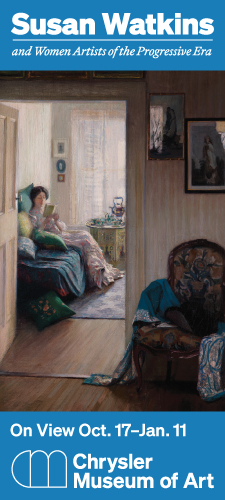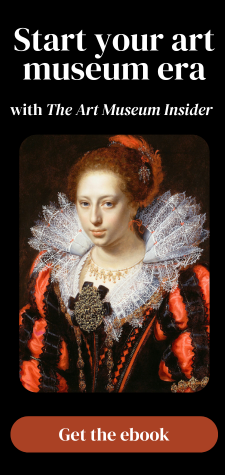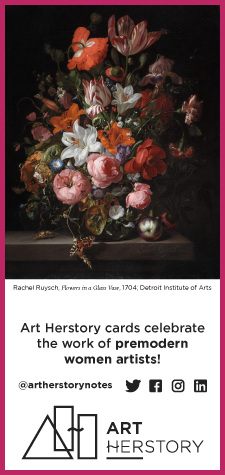Guest post by Sivan Maoz, MA Graduate, The Warburg Institute, London
The biblical story of Judith recounts how a young Jewish widow saved her people by using her wit and charm to behead the Assyrian general Holofernes. Central to this narrative is Judith’s maidservant, often referred to as Abra, from the Latin reference, “et abra sua” (and her maid; Jdt 8:32). Though the biblical account provides little detail about Abra, Italian artists often depicted her alongside Judith. Many male artists portrayed Abra as a passive figure, contrasting her inactivity with the dynamism of Judith as the sole heroine. In contrast, two female artists in the early modern period, Artemisia Gentileschi (1593–1653) and Lavinia Fontana (1552–1614), portrayed Abra as a young and active partner in Judith’s daring mission. Their works uniquely embodied themes of female solidarity, agency, and mutual reliance.
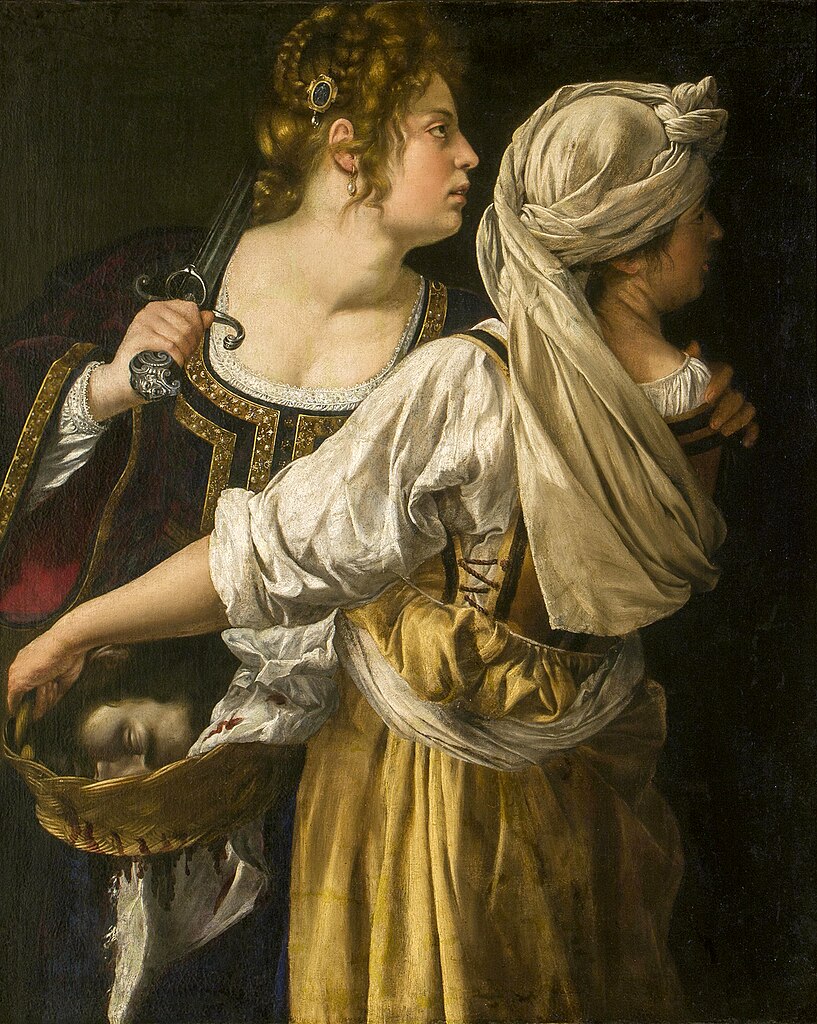
Partnership and Agency in Artemisia Gentileschi’s Judith and Her Maidservant
Artemisia Gentileschi repeatedly revisited the story of Judith, featuring the Jewish heroine and her maid in eight surviving works. Gentileschi’s works portrayed Abra as a young woman, roughly the same age as her mistress and a key participant in the beheading and its aftermath. Her painting Judith and her Maidservant (figure 1), housed in the Pitti Palace in Florence, provides a striking representation of the relationship between the two women.
The Pitti Palace Judith and her Maidservant
The painting illustrates the dramatic moment following the Assyrian general’s decapitation. Judith and her maidservant stand in the darkness of Holofernes’ tent. They look aside, seemingly alert to a sound they have just heard. The interaction between the two women conveys partnership and trust: Judith’s hand rests on Abra’s shoulder in a protective gesture, reinforcing their shared purpose.
As they work together as a team on a joint mission, the artist provides each protagonist with an attribute of Judith’s triumph. Judith holds the general’s sword while Abra clutches the basket with his severed head. Moreover, the artist emphasises Abra’s prominent role through the larger space her figure occupies in the painting compared with Judith’s figure while she covers part of Judith’s body. Gentileschi further explores the intimacy of their relationship through their costumes. In this painting, Judith’s black bodice with gold trim complements Abra’s reversed palette of gold with black trim. This visual harmony underscores their unity despite their social differences.
Gentileschi’s Other Depictions of Judith and Abra
In other paintings on this theme, such as Judith Beheading Holofernes (figure 2), Gentileschi portrays Abra as physically aiding Judith in the violent act of decapitation. The maid holds Holofernes down while Judith wields the sword. This depiction further deviates from the biblical text, which describes Abra waiting outside the tent (Jdt, 13:3). The artist instead reimagines Abra as a fully engaged participant.
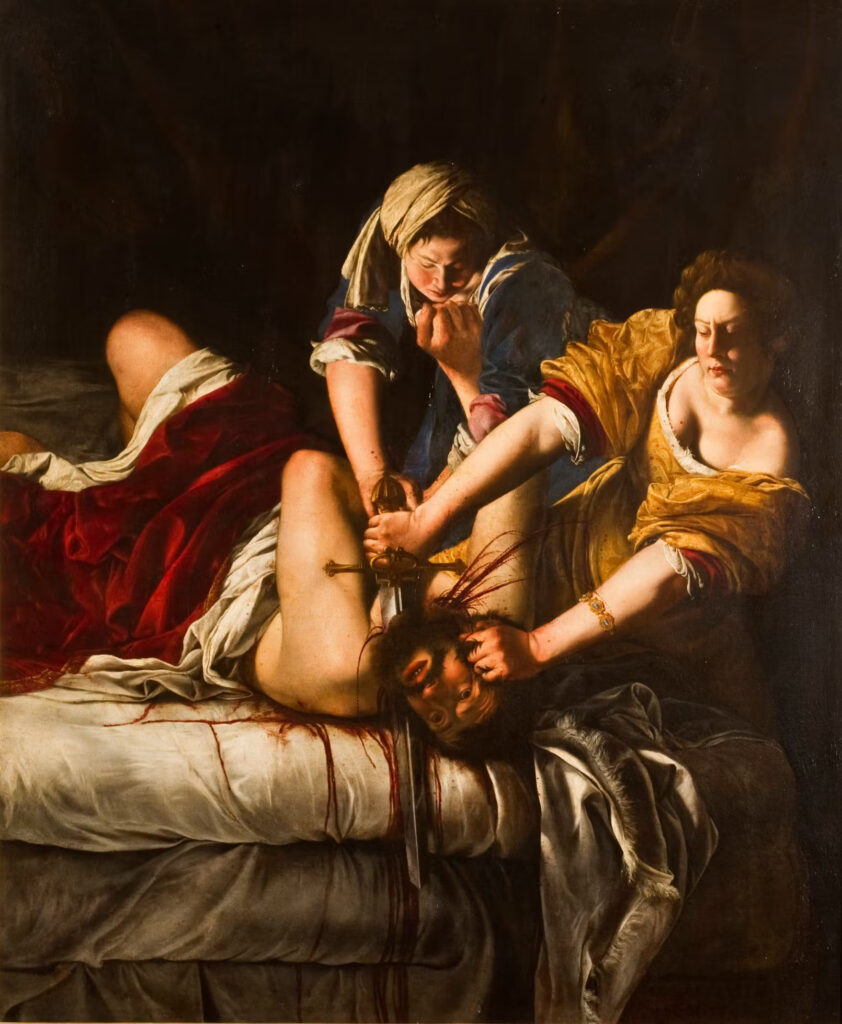
Other examples in which Gentileschi highlighted Abra’s role as Judith’s collaborator are Judith and Her Maidservant in the Detroit Institute of Arts (figure 3) and a similar composition from the Capodimonte in Naples (figure 4). In these paintings, the protagonists once again distinctively share the symbols associated with Judith’s triumph, underscoring their shared mission.
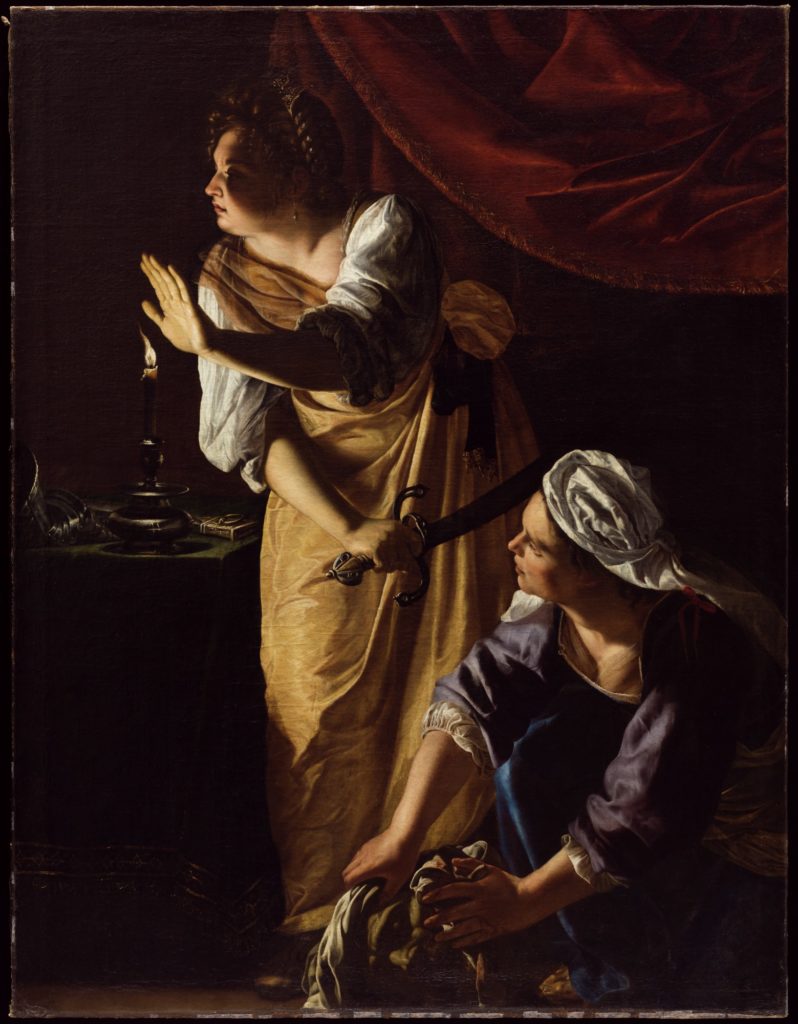
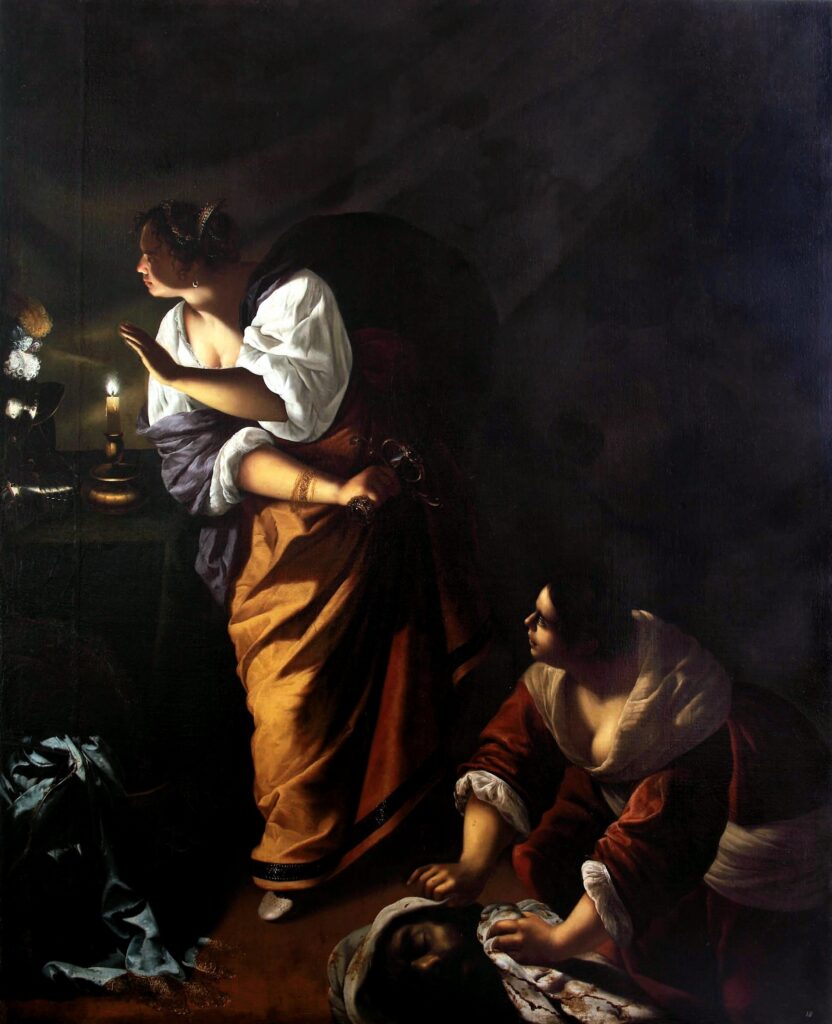
Evolution in Representation
Gentileschi’s depictions of Judith and Abra evolved throughout her career. In earlier works, both women are youthful and energetic, equally sharing the danger and triumph. However, in later paintings such as Judith and Her Maidservant, recently acquired by the Oslo National Museum (figure 5), the protagonists are more mature.
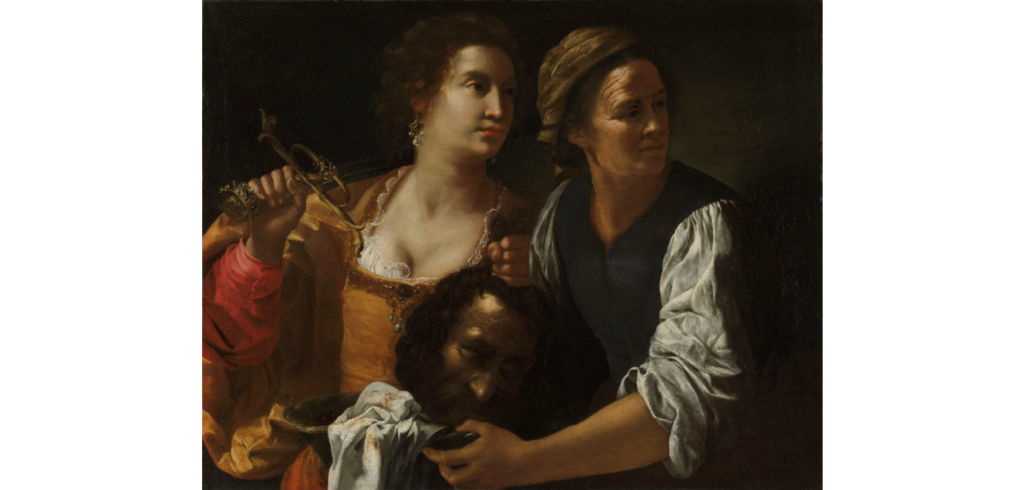
This is true of Abra especially, whom she portrays as an older, maternal figure to Judith. This shift might reflect changes in Gentileschi’s own life and artistic maturity or perhaps in the preferences of her patrons. Unlike in her other paintings, Judith holds both the sword and Holofernes’ head while Abra holds the basket, which is strategically placed for easy access by her mistress. Despite this variation, the partnership between the two women remains central as they both stand closely together, turning their gazes to a sound of danger.
A Loyal Companion—The Maidservant in Lavinia Fontana’s Works
Gentileschi was not the first female artist to capture a young and active maidservant. Her predecessor, Lavinia Fontana, also portrayed Judith’s maid as a young woman in two of her Judith paintings. In Judith and Holofernes by Torchlight (figure 6), Fontana highlights the two women’s active agency while distinguishing their tasks. Judith gazes upward in an expression of spiritual ascension while Abra busies herself with the practical task of pulling down Holofernes’ canopy. This division of labor reinforces the maid’s role as an earthly counterpart to Judith’s divine mission.
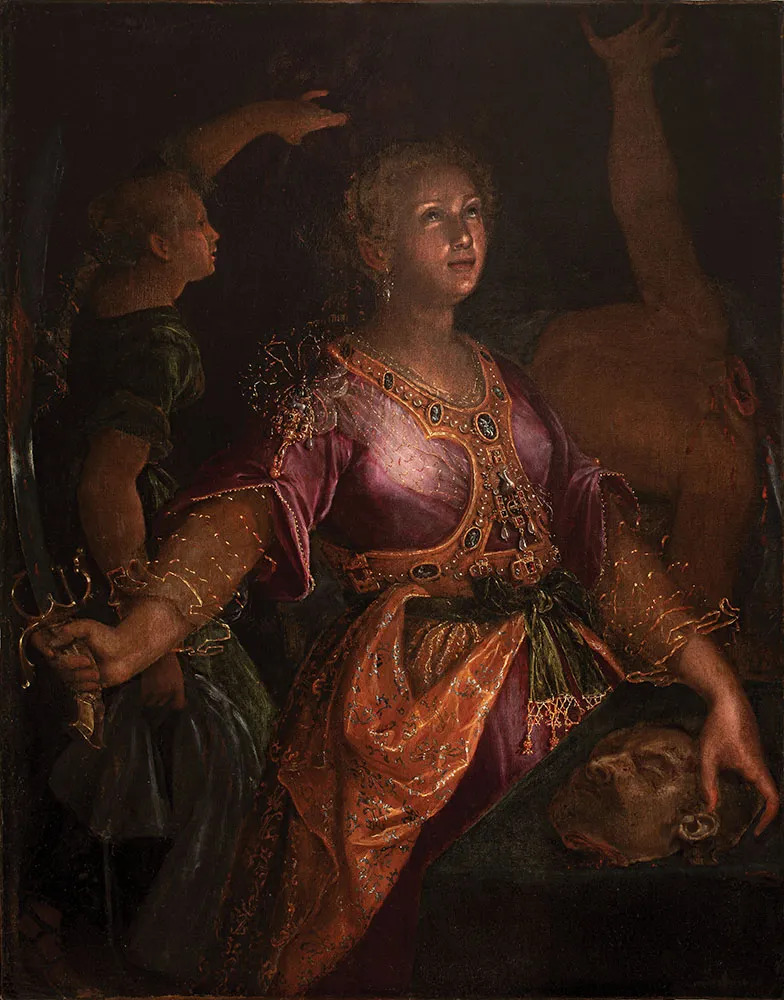
Her other painting on this theme, Judith with the Head of Holofernes (figure 7), resembles a portrait more than a history painting. Judith stands at the forefront, holding the general’s head in one hand and his sword in the other, emphasizing her as the lead triumphant. Abra, positioned in the background, carries the empty basket in a more supportive than collaborative role. Despite their differing roles, Fontana positioned the two women as mirror reflections of one another. Turning their gaze towards the viewer, they suggest a unified purpose.
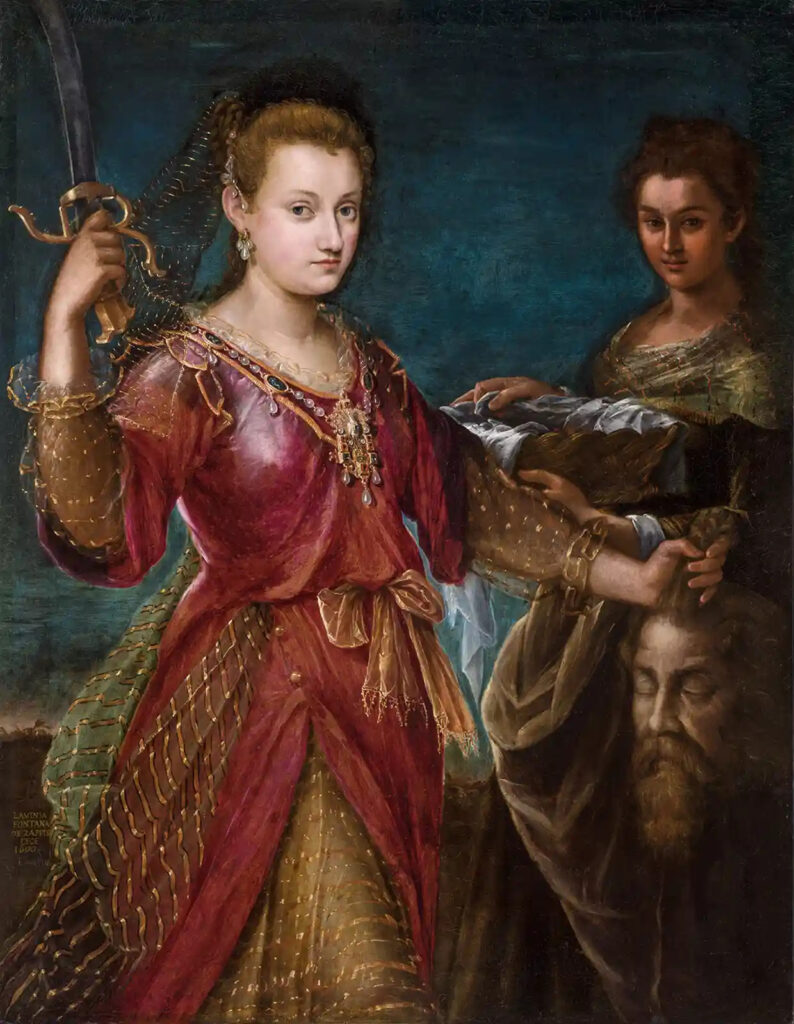
Fontana’s representations of the maid differ from Gentileschi’s. In these paintings, Judith appears at the forefront while her maid is behind her, maintaining a visual and physical distance. While Gentileschi emphasizes collaboration, Fontana portrays a clear hierarchy, with Judith as the dominant figure who holds the sword and Holofernes’ head.
Cultural and Personal Contexts
The close relationship between Judith and Abra, as portrayed by Gentileschi and Fontana, may reflect the artists’ own experiences as women in early modern Italy. Gentileschi’s emphasis on Abra as an active partner might stem from her personal struggles and desire for female solidarity. She grew up in a male-dominated house with her father and three brothers. Her older female companion, Tuzia, collaborated with her assaulter, Agostino Tassi. This experience may have led Gentileschi to envision Abra as a loyal companion and confidante- the kind of person she lacked in her own life.
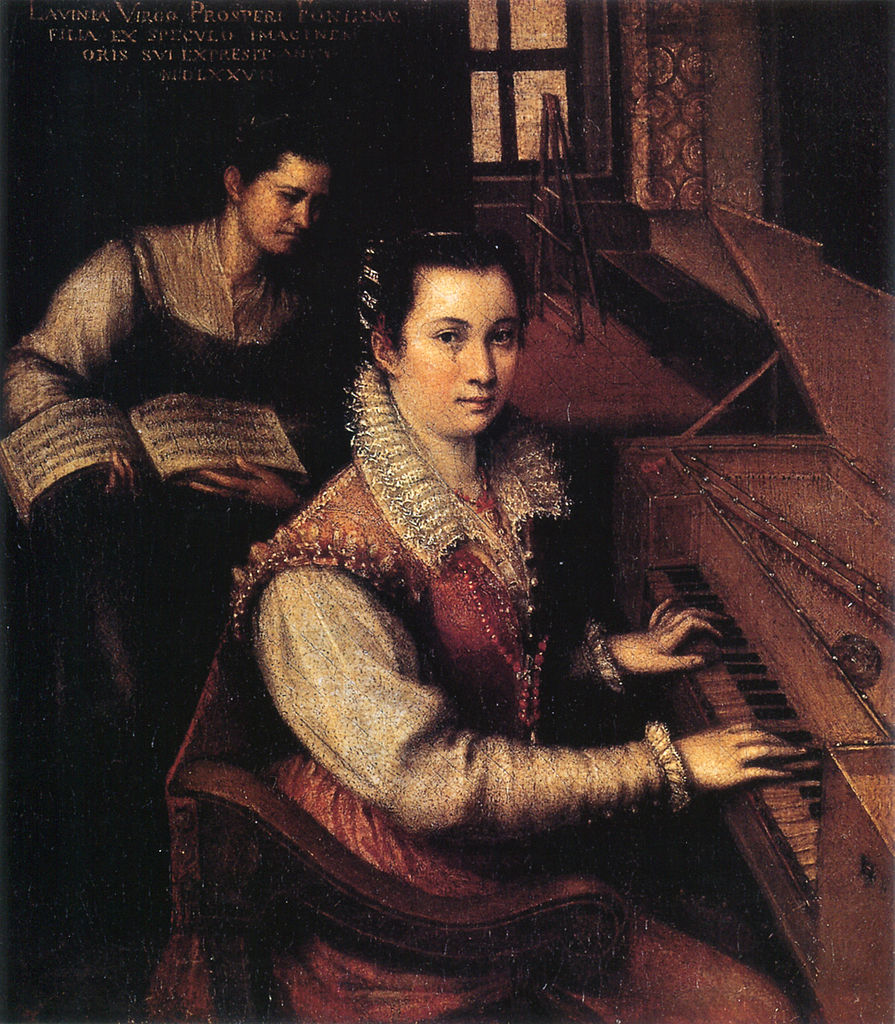
For Fontana, the relationship between Judith and Abra may have reflected Fontana’s relationship with her own maid. Fontana’s portrayal of Abra in Judith with the Head of Holofernes (figure 7) has been compared to her earlier self-portrait, Self-Portrait at the Spinet with a Maid (figure 8), because of the close resemblance between the facial features of the maid in the self-portrait and Abra in the Judith painting. In the self-portrait, which served as a gift for Fontana’s future husband, the inclusion of the maid indicates the artist’s social status as well as her virtuousness and chastity. This parallel suggests that Fontana viewed Abra as a supportive figure; her presence emphasizes her mistress’ virtuous qualities.
Servants and Their Masters in Early Modern Italy
It is also interesting to note that in early modern Italy, servants often had ambiguous social identities. They were not always of low status, and they could be related to their masters. Masters, especially mistresses, sometimes left servants inheritances or rewarded them with goods, reflecting relationships that were not purely transactional. These nuanced dynamics may also have inspired Gentileschi and Fontana to portray Judith and her maidservant as collaborators, drawing from their own cultural and personal experiences.
The Distinctive Female Voice in Abra’s Iconography
Gentileschi’s and Fontana’s depictions of Judith and Abra offer a distinctive perspective on female solidarity. Male artists of the time often portrayed Judith’s maid as a passive and older woman who contrasts Judith’s beauty, youth and agency, as can be seen in Caravaggio’s famous work Judith Beheading Holofernes (figure 9).
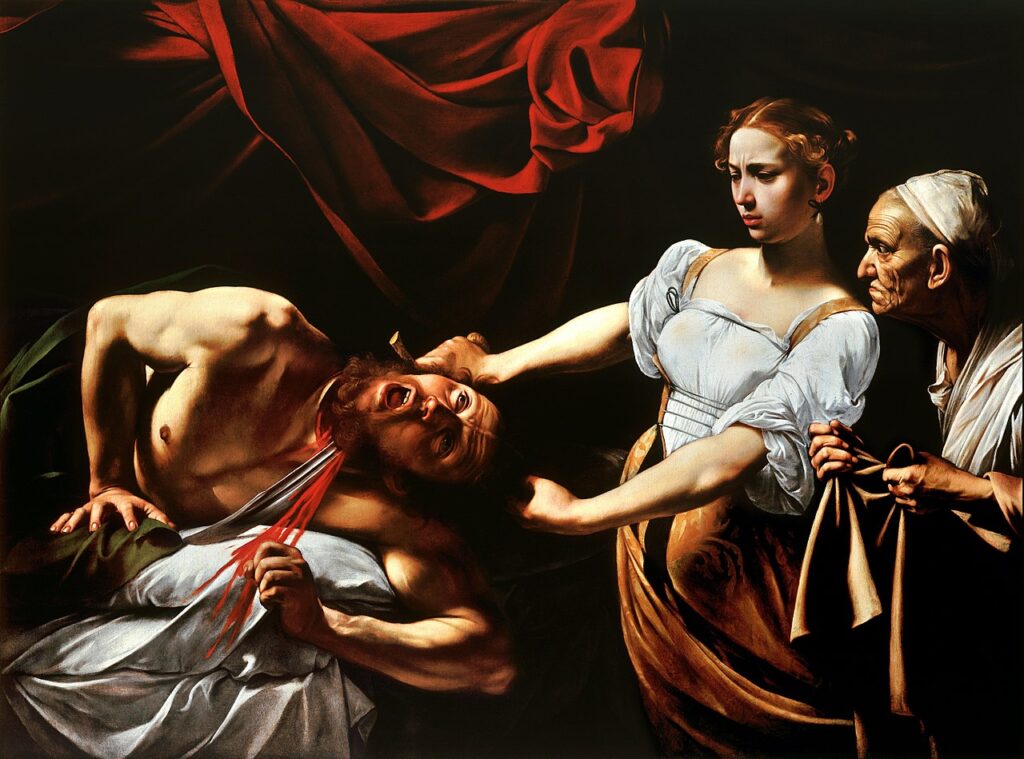
In contrast, Gentileschi and Fontana use their compositions to explore the nuanced relationship between the two women, emphasizing themes of trust, partnership and shared agency. As we saw, Gentileschi’s works stand out for portraying Abra as an equal who shares the triumph with her mistress, highlighting the bond between the women as they navigate danger together. Fontana, while maintaining a more traditional social hierarchy, still presents Abra as an active figure who plays an essential part in Judith’s triumph. Both artists challenge conventional narratives, offering a more complex and empowering vision of the Judith story.
Through their portrayals of Judith and Abra, Artemisia Gentileschi and Lavinia Fontana reimagine the biblical tale as a story of female solidarity and strength. Their works reflect not only the cultural and social dynamics of their time, but also their personal experiences as women navigating male-dominated spaces. By giving Abra an active role, these artists elevate her from a passive servant to a vital participant, reshaping the narrative into one of partnership and mutual empowerment.
Sivan Maoz holds an MA in Art History, Curatorship, and Renaissance Culture from the Warburg Institute. Her research focuses on women artists and the iconography of biblical heroines; her MA dissertation explores the representations of Judith by Italian female artists in early modern Italy. As a prospective PhD student, Sivan aims to highlight the overlooked contributions of Italian female artists and their work within the broader context of the proto-feminist literary debate known as the Querelle des Femmes (The Woman Question).
More Art Herstory blog posts about Italian women artists:
Plautilla Nelli and the Workshop of Santa Caterina in Cafaggio, by Alessia Motti
Judith’s Challenge, from Lavinia Fontana to Artemisia Gentileschi, by Alessandra Masu
Maddalena Corvina’s Saint Catherine of Alexandria, by Kali Schliewenz
Exhibiting Artemisia Gentileschi; From the Connoisseur’s Collection to the Global Museum Blockbuster, by Christopher R. Marshall
Portrayals of Mary Magdalene by Early Modern Women Artists, by Diane Apostolos-Cappadona
Plautilla Bricci: A Painter & “Architettrice” in Seventeenth-century Rome, by Alessandra Masu
The Restoration of Royalty: Lavinia Fontana’s Queen of Sheba and King Solomon, by Aoife Brady
Giovanna Garzoni’s Portrait of Zaga Christ (Ṣägga Krǝstos), by Alexandra Letvin
Artemisia Gentileschi: What Wasn’t in the London Exhibition and Why it Matters, by Jesse Locker
Lavinia Fontana: Italy’s First Female Professional Artist, by Elizabeth Lev
Plautilla Bricci (1616–1705): A Talented Woman Architect in Baroque Rome, by Consuelo Lollobrigida
Two of a Kind: Giovanna Garzoni and Artemisia Gentileschi, by Mary D. Garrard

